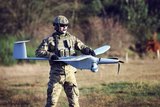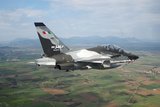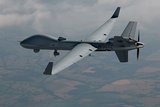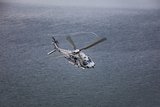Air Warfare magazine: sixth-generation fighters, airborne networking and more
Read the first edition of Air Warfare for free in our app or on your desktop. Register below to be sent the download link and receive future editions direct to your inbox.
Comment
Finland's insistence on practical flight trials to prove the capability of the aircraft bidding for its HX fighter requirement could prove a salutary lesson for other defence programmes.
Features include:

Gloves off?
The global MALE UAV market has evolved into an effective three-way contest between US, Israeli and Chinese suppliers. As the technology reaches its fifth generation, Shephard analyses how cost, capability and export controls are impacting on who buys what from whom.

Home advantage
While most Asian nations still rely on imported combat aircraft, an increasing number are looking to go it alone with indigenous design and production.
Other features include:
Cloud formation
As the UK-led Team Tempest and Franco-German Future Combat Air System projects ramp up, Shephard assesses how industry is preparing to bring such advanced concepts as combat clouds and remote carriers to life.
Staying on top
Ageing fleets in many nations and a heightened regional threat environment could lead to an increase in naval helicopter procurement in Asia-Pacific. Shephard Defence Insight breaks down the numbers.
Changing planes
The transition of a pilot from a potentially ‘dated’ aircraft to a next-generation platform with state-of-the-art capabilities brings with it a range of benefits and occasional challenges. Shephard spoke to US military aviators to get a feel for the process.
Strike action
Modern air defence networks are presenting an increasingly complex set of obstacles that missile designers must overcome to ensure that a target is hit.
Ironing it out
Development problems have plagued tactical and strategic transport aircraft from meeting operators’ expectations, but as models continue to earn their stripes, signs are strong that capabilities can be improved.
Staying on air
Facing the prospect of operations in heavily jammed environments, Western militaries are re-examining their airborne communications needs.

More from Air Warfare
-
![Portugal signals interest in establishing A-29N final assembly line]()
Portugal signals interest in establishing A-29N final assembly line
As the launch customer for the NATO-configured variant, Portugal also took delivery of the first five A-29N aircraft from its order for 12, placed in 2024.
-
![Leonardo signs contract on Austria’s M-346 aircraft order]()
Leonardo signs contract on Austria’s M-346 aircraft order
The first of the 12 M-346 aircraft are expected to be delivered to the Austrian Air Force by 2028, according to the company.
-
![2025 UAV market review: $7.8 billion in new contracts signed as US leads spending]()
2025 UAV market review: $7.8 billion in new contracts signed as US leads spending
Qatar and Indonesia followed the US’s high spending on new uncrewed aerial vehicle contracts across 2025, while MALE and micro drones and loitering munitions were particularly popular subcategories this year.
-
![German Navy in “ramp-up” phase as it welcomes first NH90 Sea Tiger delivery]()
German Navy in “ramp-up” phase as it welcomes first NH90 Sea Tiger delivery
With all 31 aircraft set to be delivered by 2030, the helicopters will gradually replace the ageing Sea Lynx fleet which are due to be retired in 2026.






















